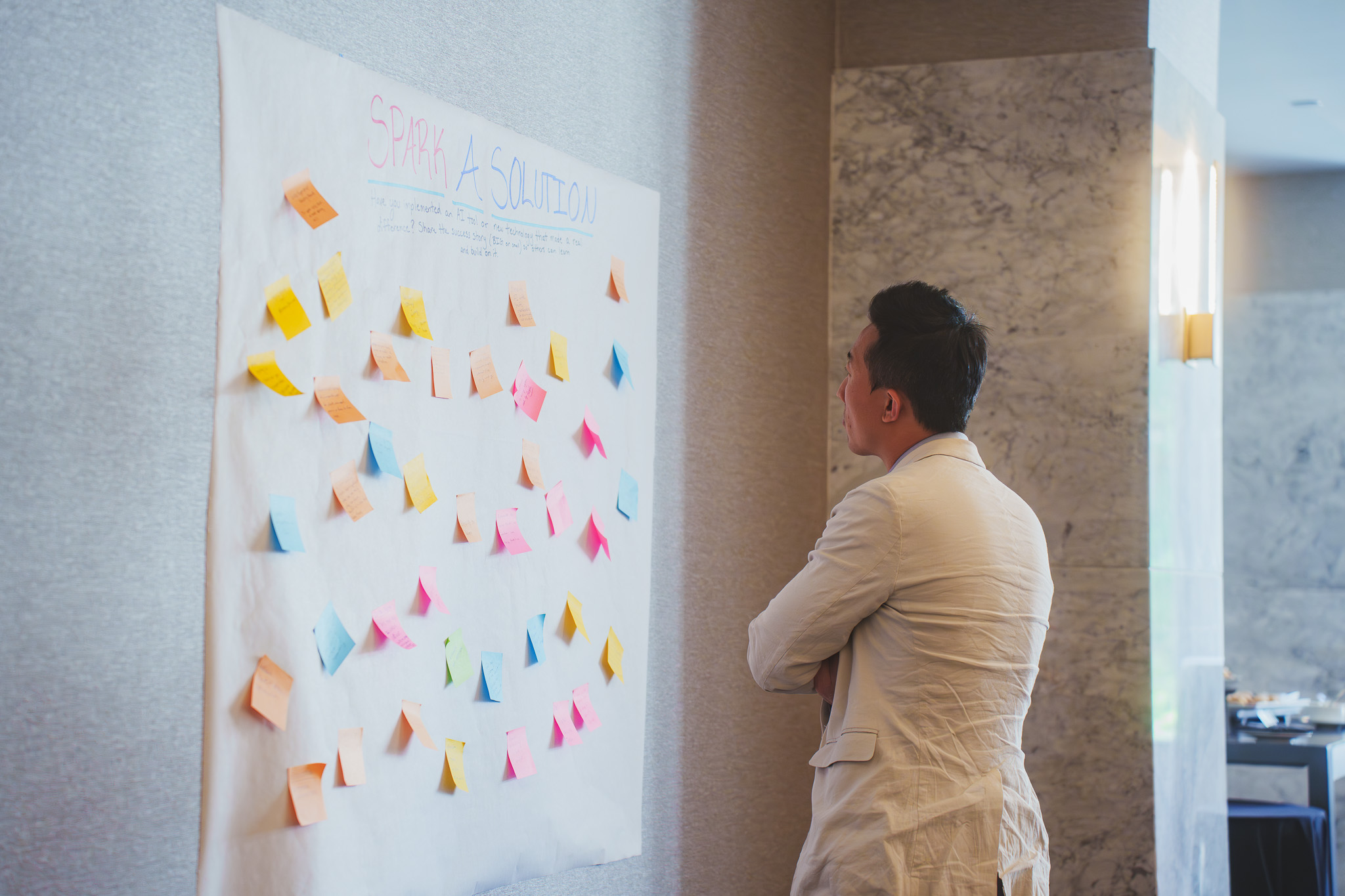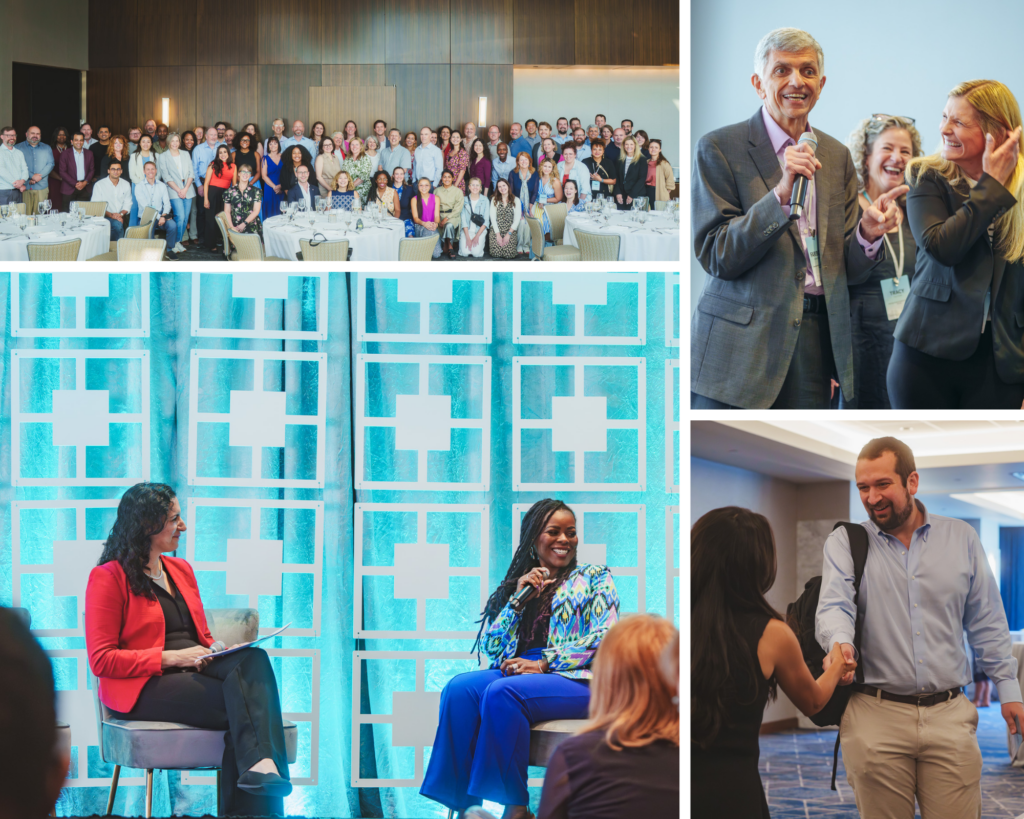
3 Takeaways for Government Leaders Right Now
Insights from our Flagship Gathering
Across the country, government leaders are leaning in to meet the complexities of this moment with intention and creativity. We saw this firsthand last month, when health and human services (HHS) leaders from 27 states, the District of Columbia, and the Cherokee Nation joined us for our annual Flagship Gathering, Reshaping Human Services in an Automated Age—co-hosted with the Aspen Institute Financial Security program.
In the face of federal policy changes, rising need, and the rapid advancement of artificial intelligence (AI), they came ready to ask tough questions, build new muscle, and rethink what modern public service can look like.

Over two days of conversation in Oklahoma City, what emerged wasn’t a single blueprint or breakthrough, but a web of connections, insights, and lessons learned that we’re all still working together to unpack.
As we reflect on our time together, we wanted to share a few key takeaways that hold value for anyone working at the intersection of policy, service delivery, and technology.
The parrot doesn’t think you’re handsome.
One of the most memorable lines from the event came during a discussion on how AI fundamentally works: “The parrot doesn’t think you’re handsome. It just knows that when it says you’re handsome, it gets a cracker.”
It’s funny—but it’s also a useful reminder. The parrot, of course, is AI. And it doesn’t “know” anything in the human sense. It makes predictions based on patterns in historical data.
Noah Duncan and Ben Klosky of Foster Insights at the University of Chicago used this metaphor to underscore a core principle: AI is powerful, but it must be used in the right contexts.
Today, AI is useful in situations where answers are hard to find but easy to verify. Good use cases include retrieving information from policy documents, transcribing audio, summarizing content, or spotting anomalies in large datasets.
But today’s AI should not be asked to make decisions that require judgment, nuance, or human context. So as you assess potential use cases, keep asking: What’s the real-world consequence if AI gets it wrong?
Don’t move the junk drawer.
During a panel on Medicaid work requirements, Jess Kahn, Partner at McKinsey & Company, offered another metaphor that resonated: “When you move to a new house, you don’t bring the junk drawer with you.”
Here, the junk drawer is the digital clutter in government systems. While the technology— and our understanding of the right use cases— is still maturing, not everyone needs to be the first mover. For agencies taking a more cautious approach, now is the time to clean house—map what systems and processes exist, surface what’s duplicative, make sense of your data, and get clearer on where the biggest workflow bottlenecks really are. And increasingly, AI can help with that cleanup. Agentic tools can analyze legacy code to flag what’s inactive, translate outdated code into plain language, and even help determine which policies are no longer relevant—so agencies can decide what to discard, update, or carry forward.
Even in uncertain times, this kind of prep work pays off. It’s not just cleanup—it’s a leg up.
Remember the aces in your spaces.
One of the clearest themes from the gathering: the best insights often come from the people already doing the work, especially when they are empowered to experiment with and provide feedback on these tools in their day to day.
Whether it’s staff flagging recurring pain points or internal teams spotting gaps in data systems, these folks are the “aces in your spaces,” as someone brilliantly quipped in one of our sessions. (If that was you, please accept our sincere thanks—and shoot us a note, because we owe you a high five and a coffee.)
These ‘aces’ can help pressure-test ideas, build buy-in, and make sure tech solutions stay anchored to the needs and experiences of staff and the public.These tools shouldn’t be framed as replacements—they should be framed as relief valves. In other words, technology should make it easier for people to do the work of serving people. After all, when people feel empowered by change, they’re more likely to champion it.
This all points to a bigger truth which is not new and has nothing to do with AI. Lasting change doesn’t come from top-down directives alone. It takes trust, participation, and a shift in how people feel about the tools they use every day.

With a few weeks of reflection behind us, we realize what made this time together so powerful wasn’t just the ideas—it was the openness. In a fast-moving, high-stakes moment, leaders came together hungry for candid conversation, shared learning, and co-creation.
That spirit is something we’re committed to growing. At Center for Civic Futures, we’re here to help government leaders think critically, experiment safely, and make smart choices about AI and modernization.
The work ahead won’t be easy. But with the right mindset, capacity, and network of support, we believe HHS leaders can shape not only how AI serves the public sector now, but the future of government service delivery itself.
We’d like to express a sincere thank you to our sponsors for making this event happen: Nava, Maximus, The Minerva Fund, Binti, Healthy Together, and McKinsey & Company. If you or a colleague would like to connect with our growing community of state, tribal, and territorial HHS and AI leaders, please email Kirsten Tillett at ktillett@centerforcivicfutures.org. We’d love to hear from you.